Introduction
Select the best drain type before construction begins for a successful bathroom remodel, including a standalone shower. This simple decision can make drain cleaning easier and prevent hair and soap clogs from causing headaches.
Several shower drains are available on the market, so it’s essential to understand the difference between them before purchasing. You may choose the ideal drain type for your shower with the following advice.
Still unsure of which drain is right for you? Contact the HOFEN SANITARY manufacturer today. We can offer qualified solutions and recommendations to meet your wholesale needs.
Difference Between a Tub and Shower Drain
Do not underestimate the importance of choosing the right shower drain for your bathroom. The type of drain you select will significantly affect how often you clean it. Shower floor drains are considerably simpler to maintain clean than tub drains that must be manually opened and closed. When selecting a tub or shower drain, consider which type is easiest to keep clean.
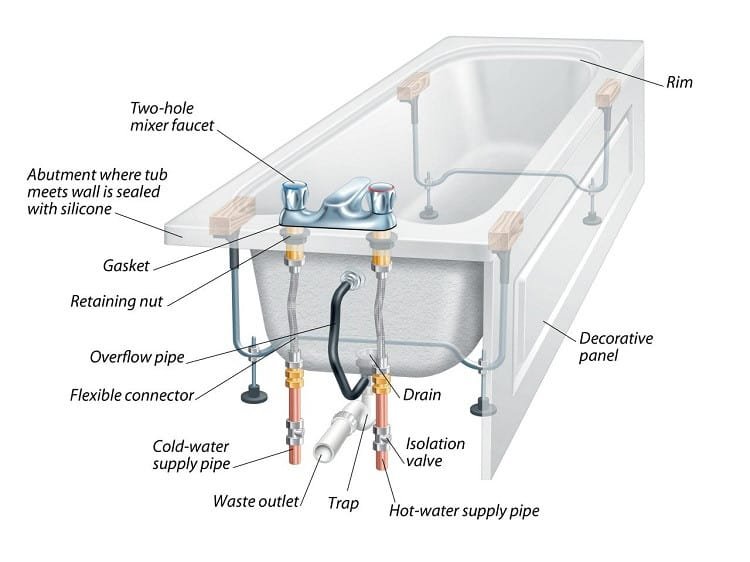
You will need a shower floor drain that removes wastewater as you clean yourself. You must open and close a tub drain to keep water in or let it run out. This requires a lift-and-turn mechanism. To close the drain, you push it down and turn clockwise. To open the drain, you lift, turning the tool counterclockwise. Sometimes, tubs have levers that open and close the drain. Shower drains are often simpler, depending on your personal preferences.
Choose a drain that will be easy to keep clean so you can enjoy your bathroom without worrying about a clogged drain.
Pipe Connection Size
Everybody who has ever dealt with a blocked drain knows the potential damage even a little obstruction can do. Choosing the suitable size pipe for your needs is important to prevent these issues. For example, most standalone shower and bathtub drains use a 2-inch connection to the pipes that remove the used water. However, tub drains typically use a 1 ½-inch connection.
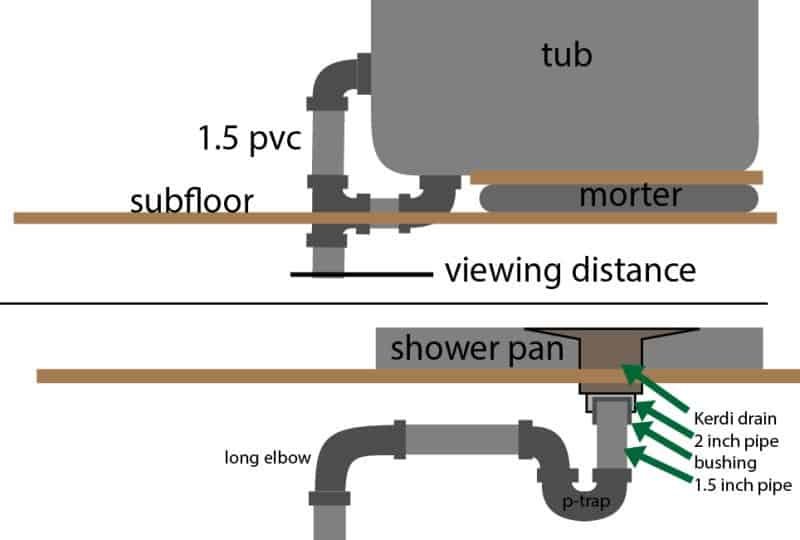
The size impact on drain cleaning depends on the mechanism you use to prevent clogs. Since shower drains are floor drains, you can choose one that will trap hair and other debris before it goes into your pipes. This can help reduce the risk of clogs, even if the pipes are smaller in diameter. Ensuring you have the right size pipe for your needs is important in keeping your drains flowing freely.
Connections
Shower drains have a clear advantage over bathtubs when it comes to connectivity. They don’t require a pipe from the shower to the drain system in your home, so you don’t have to worry about expensive drain cleaning and unclogging services. In addition, shower drains are less likely to become clogged in the first place because they’re not constantly exposed to soap, hair, and other debris. As a result, you can enjoy a hassle-free showering experience without having to worry about clogged drains.
Incorrectly installed drains can cause backups, clogs, and water damage. They may also produce bad smells and present health risks.
Main Categories of Shower Drains
There are a massive number of shower drain types. However, they mainly fall into two categories: linear or point drains.
Point drains.
Point drains account for the majority of shower drains. Located in the middle of the floor, they collect water off a floor that slopes toward the drain. Many people choose point drains for the clean look they create in the shower. Everything appears seamless since the drain virtually disappears into the floor. There are no worries about water pooling in corners or flowing over the edge of a tub.
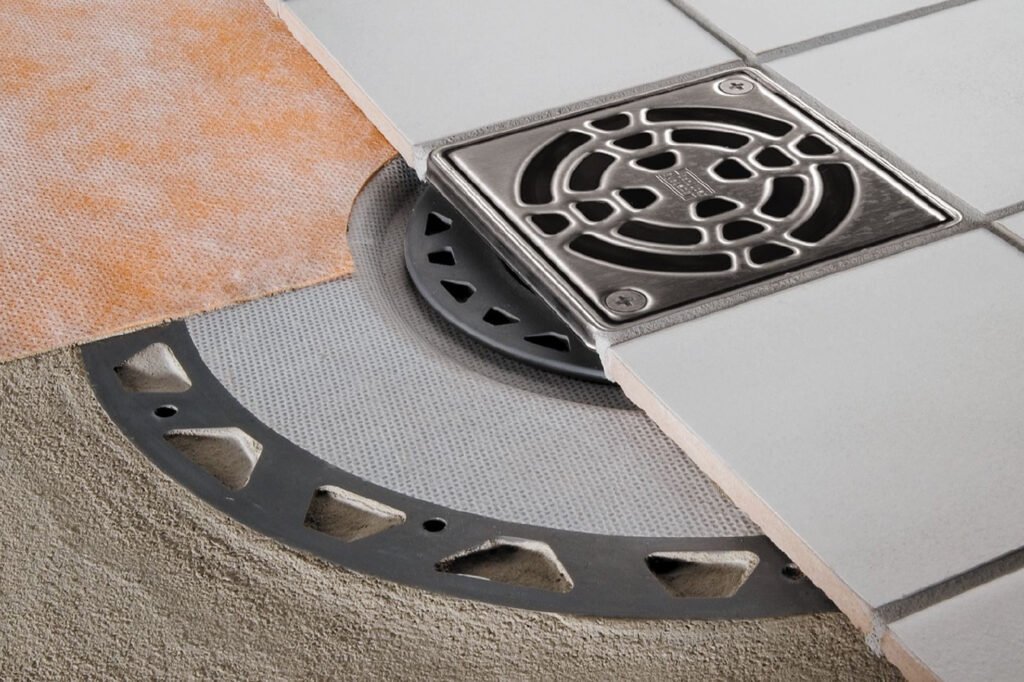
Hair and other debris wash directly down the drain without getting caught on anything. If you use square tiles, look for a square point drain to match for aesthetic purposes. As a result, it is simple to get a tight fit between the tiles and the drain. You may get a better fit with a square drain, making drain cleaning easier.

No matter what point drain you choose, properly slope your floor so water flows easily into the drain. Too much slope and water will move too quickly, while too little slope will result in standing water in your shower.
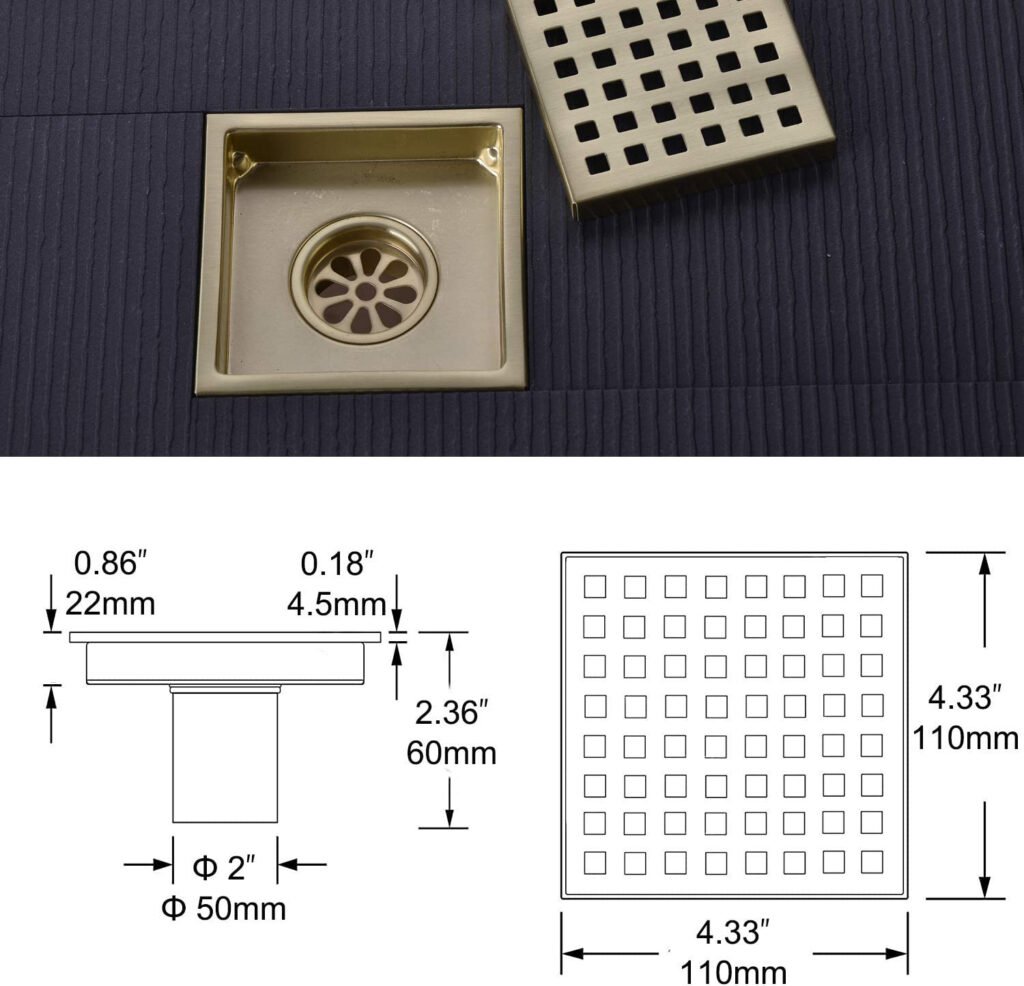
Features:
- The best shower drain for your bathroom must fit a standard US-sized 2-inch water outlet. It should also be made from durable 304 stainless steel, resistant to corrosion and rust.
- Additionally, it should feature an easy-to-clean design with a removable cover, hair catcher, and lifting key.
- The drainage should be fast and smooth, with less water left in the drain channel.
- Finally, the square drain is carefully manufactured with high-end color and craftsmanship.
Pros
- Inexpensive
- Very common
- You can get them with round or square grills.
Cons
- Not a good choice for curbless showers
- It doesn’t work well with large tiles
Linear drains
Linear drains are long and narrow, making them a popular choice for those who want to add drama to their shower. Although they can be installed in the middle of the floor, they usually go along one wall, with the floor sloping evenly toward the drain.
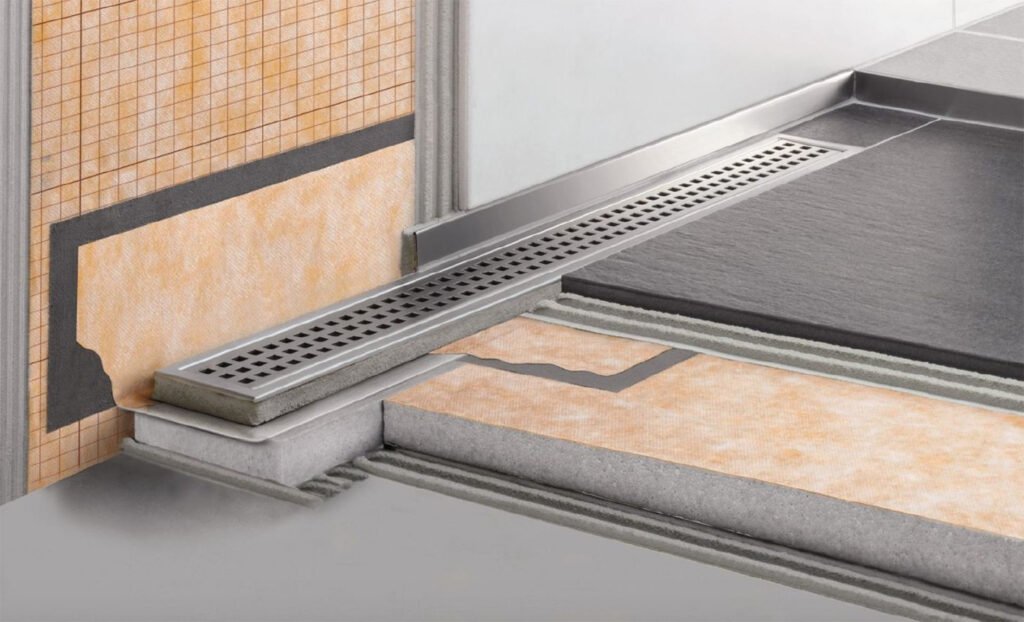
Some linear drains are 72″ long, making them a luxurious addition to any shower. While both linear and point drains are designed to drain water efficiently, point drains are usually cheaper to install. As a result, linear drains are often considered more luxurious, while point drains are more practical. Ultimately, your drain should be based on your personal preferences and budget.

Features:
- A floor shower drain with high displacement is perfect for bathrooms, kitchens, garages, swimming pools, basements, and other areas to drain water.
- The size of the linear shower drain is 36 inches in length and 2.75 inches in width. The diameter of the drainage outlet is 2 inches. The X-shaped gathering guide groove helps achieve an average of 60 L/min (without filter mesh).
- This linear drain is anti-corrosive and rust-resistant, made with AISI 304 stainless steel and a thickened brushed nickel panel.
- Easily clean the filter mesh after use.
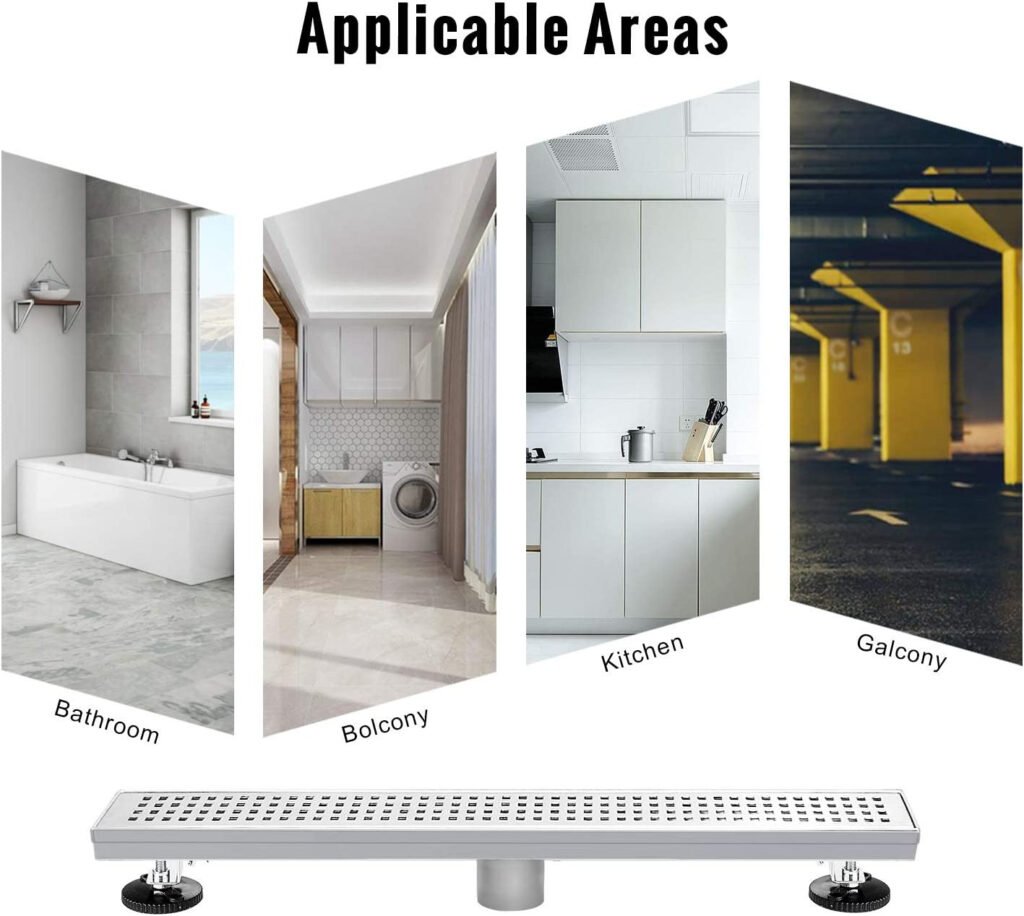
Pros
- Works great for curbless showers
- You can use large tiles.
- The floor only slopes in one direction
Cons
- More expensive than point drains
Other Drains for Different Types of Shower Floors
So far, we have reviewed the two principal types of shower drains. However, there are still various drain options within these categories. The drain you should opt for depends on the type of floor your shower is built on and the flooring material. Listed below are three types of drains meant for more specific circumstances.
Three-Piece Drain
When most people think of a wooden floor, they picture something like hardwood, which is beautiful but not ideal for bathrooms where there is always the potential for water damage. This is why, if you have a shower on a wood floor, you need to take some precautions to ensure that the wood stays in good condition.
- The first step is to install a shower liner to protect the wood from any water that could cause mold, mildew, and even rot.
- The second step is to install a three-piece drain, allowing you to tile over the drain and create a waterproof barrier.
By following these two measures, you may be sure your wood floor will remain in good shape for years.
One-Piece Drain
A one-piece drain is the simplest installation type, as few pieces are involved. This type of drain is meant for showers with tile floors built on top of concrete – since the concrete does not need to be protected from getting wet, the drain does not have to be as robust.

The one-piece drain screws into the waiting drainpipe below so that the top of the drain is just under the level of the tile. A strainer is then screwed onto the top of the drain. This type of drain is ideal for installation in a shower with a tile floor.
Multipiece Shower Drain
Multipiece shower drains are more complicated than the average, but they’re still installed on simple shower floors. These drains are used with one-piece shower stalls and pre-molded shower bases. Most of the parts are installed below the shower floor and onto the drain pipe on the subfloor.
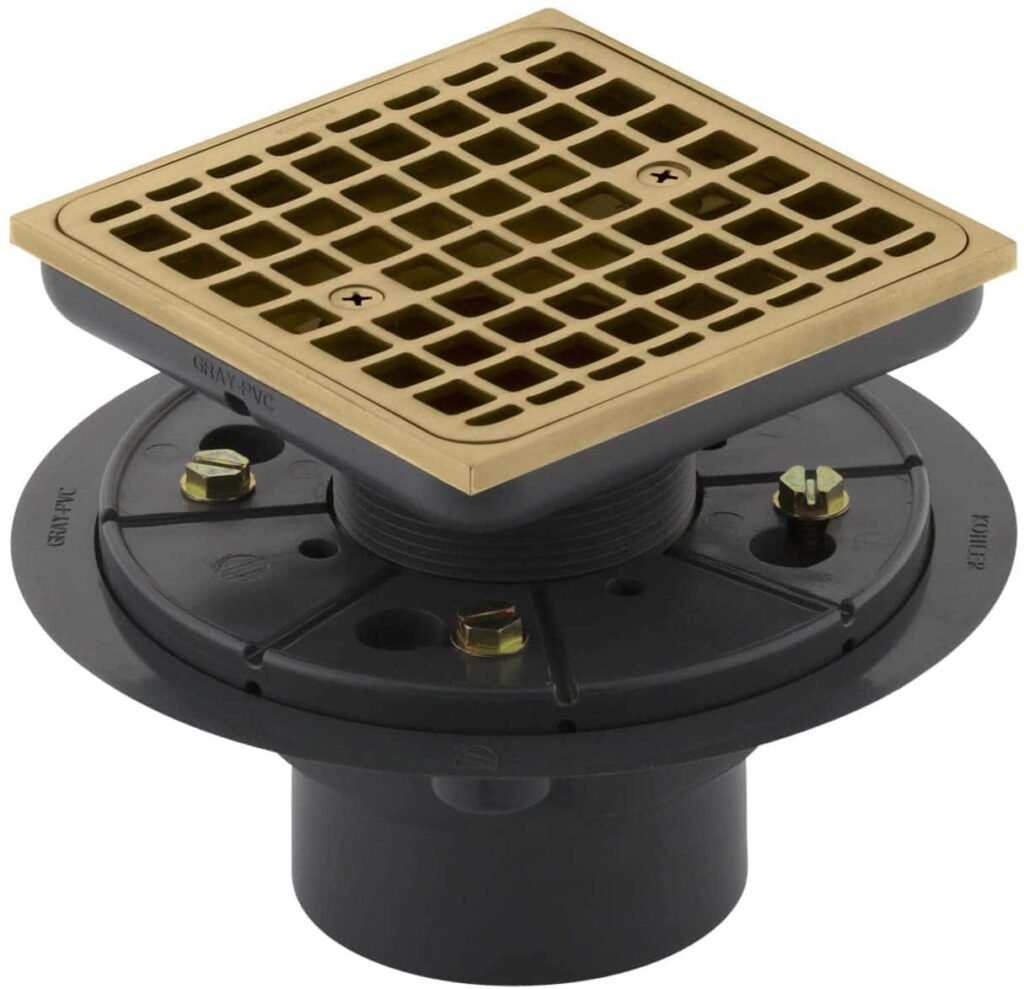
Once that’s done, the shower base is added on top, and the threaded drain body is screwed into the flange waiting below. Given the number of pieces in multipiece shower drains, it’s crucial to check that each has been put properly before continuing. If you don’t, you can have a leaking or clogged drain. But multipiece shower drains can be a great option for your home when installed properly.
Large Tiles or Small Tiles
Large tiles
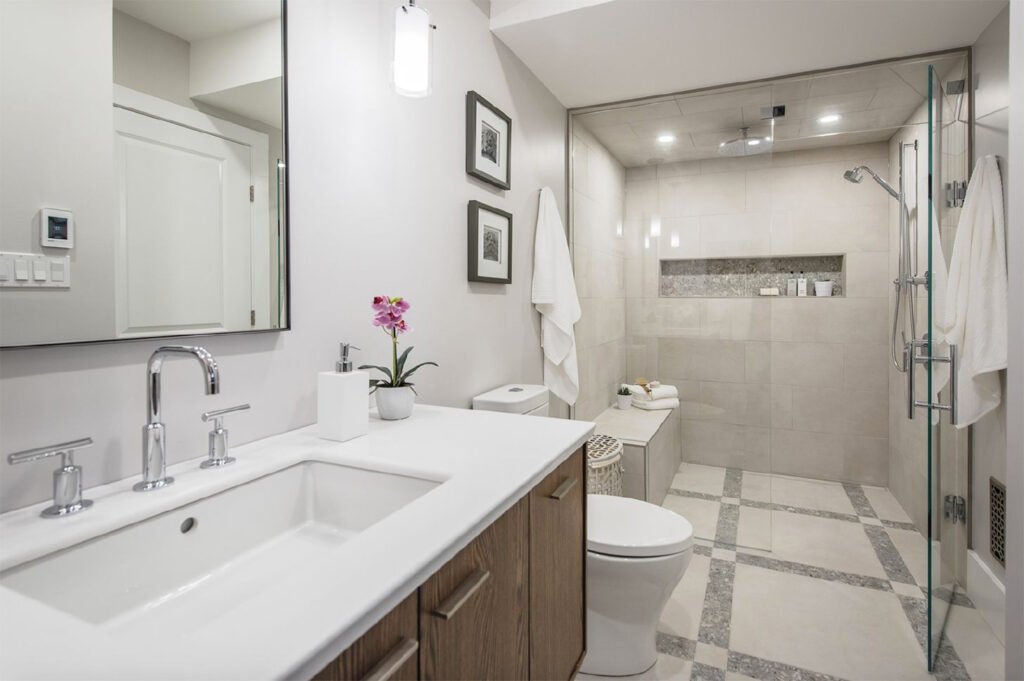
A linear drain is a particular drain in a shower with a sloping floor. Linear drains give you more freedom with tile size because the floor slopes evenly, freeing you to choose the size and style that appeals to you. Many homeowners prefer large tile sizes so that the shower matches the rest of the bathroom.
Larger tiles also make spaces feel larger. Linear drains are available in various styles and finishes, so you can find one that complements your bathroom’s décor. Installation is typically straightforward, and most linear drains come with everything you need for a seamless installation. A linear drain may be a fantastic choice, whether designing a new bathroom or remodeling an old one.
Small tiles
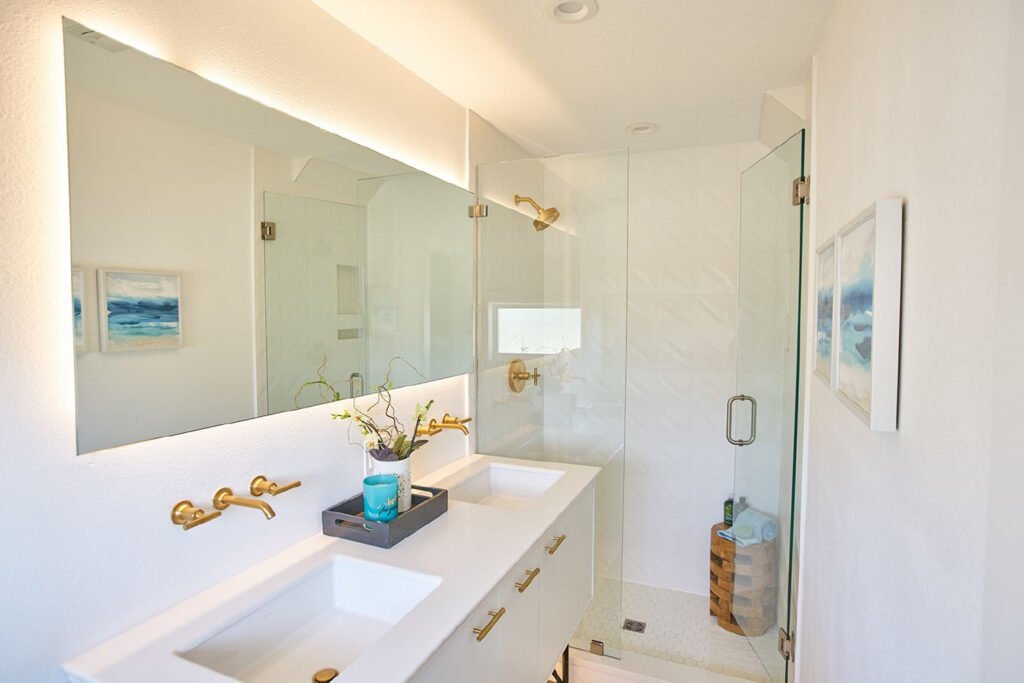
Before attempting to unclog a bathroom drain, homeowners should consider several factors. One is the size of the tiles you’ll be using. A point drain might suit your needs if you’re happy with 4″ x 4″ tiles. Remember that tiles must lie flat, and a sloped floor has multiple slopes.
Point drains are ideal for your bathroom if you want to use smaller tiles to create a fanciful pattern. Another consideration is the type of drain you need. A point drain might be all you need if you have a standard bathtub or shower. A linear drain should be considered if you have a walk-in shower.
What Style of grade do You Want?
After you land on a point or linear drain choice, you still have to choose the great Style. Most frequently, homeowners select a design that complements the finish of other bathroom fixtures. Choose a drain grate that will fit if your taps are chrome. Thanks to a tile-able grate, you may cover the drain with the shower tile.
You can see through the shower floor without interruptions as the water drains around the edges.
From a maintenance perspective, choosing a grate that stays in place but that your plumber can remove easily for drain cleaning services is a good idea. Some homeowners opt for a decorative grate that makes a statement in the shower.
Others choose a more subdued style that blends in with the surrounding tile. Grates are also available in various finishes, such as brushed nickel, oil-rubbed bronze, and polished brass. The choice ultimately boils down to personal style and what would work best with the overall aesthetic of your bathroom.

